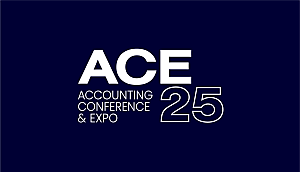Recent research into the state of the accounting profession has revealed that 86 per cent of accounting firms have revenue of less than $10 million, whilst 54 per cent have revenue of less than $1 million.
You’re out of free articles for this month
Within the same research — conducted by business finance specialists Smartfee — it’s revealed that despite levels of commercial risk in the accounting profession having declined slightly in recent years, a number of worrying risk trends continue to be picked up, particularly among those numerous smaller firms, including, notably, an absence of succession planning.
Many small practices are financially vulnerable and have no succession plan, particularly those where the principal is nearing (or in some cases, beyond) the age at which most would be looking to retire. The client base is often shrinking and they rely heavily on fees from compliance work, with potentially lucrative advisory work often unbilled as a gesture of goodwill to the client. Many of these practices have more in common with a hobby than they do with a viable business.
Too many smaller practices are excessively reliant on the relationship between the principal and the client. That makes it difficult for a potential buyer because when the principal departs, there is no longer an ongoing relationship with the remainder of the practice, meaning that the client often walks away.
For principals looking to sell their business, it’s vital to ensure that a client succession plan is put in place before marketing your firm so that potential buyers have comfort that they’re actually buying a stable book of business. So, delegate the client relationships to your staff, get your clients used to dealing with a variety of staff members, step into the background and focus on the strategic running of your business.
Even if you can get your business ship-shape for sale, there are plenty of risks associated with finding the right buyer. Many sellers have an inflated view of the valuation of the practice, based on an unrealistic multiple of fees that fails to take into account client attrition and changing market trends away from the sort of work that has often been the bread-and-butter of the practitioner, such as basic tax and accounting compliance. The desire to maximise value can easily lead practitioners to sell to high-bidders who don’t have the best interests of the business and its clients at heart.
The movement of financial planners into the market for accountancy practices is a major threat to those already in the accounting space, who often find themselves outbid by financial planning firms with deeper pockets. But the threat over the longer term is to the overall quality of service offered to clients. Some financial planners regard accounting practices as a quick and easy way to buy a book of clients to be mined for potentially more lucrative sales of financial products; good, independent advice and quality service may suffer, and the currently high levels of trust clients have in their accountant may decline as a result.
Preserving the value of the practice requires confidence that the goodwill of the business will remain largely intact after the principal departs. Many sellers are looking for a high multiple on revenue along with a small residual. To deliver that, an acquisitive accounting practice needs to have these key hallmarks in place when considering an acquisition:
- Understand the services you need to offer and ensure clients of the acquired practice will be able to get tailor-made, professional and independent advice about the issues that matter to them. This will help maintain and even build the value of the business post-acquisition.
- Seek to maintain existing business locations. After all, if you’ve built a successful business where you are, why would any clear-minded acquirer want to change that?
- Retain the existing fee structure of the acquired business. It’s what the clients are used to and you need the acquired business to continue to thrive.
- Aim to retain the existing brand, either permanently or at least until the acquisition has matured.
- It’s crucial for the key staff of the acquired business to support the acquisition and commit to the business going forward. That is, ensure there are qualified loyal staff with sound knowledge and familiarity of existing clients making transition seamless. Do everything you can to lock in that commitment.
Charles Nakkour, acquisitions manager, H&R Block
Charles Nakkour, H&R Block
AUTHOR

 Login
Login






